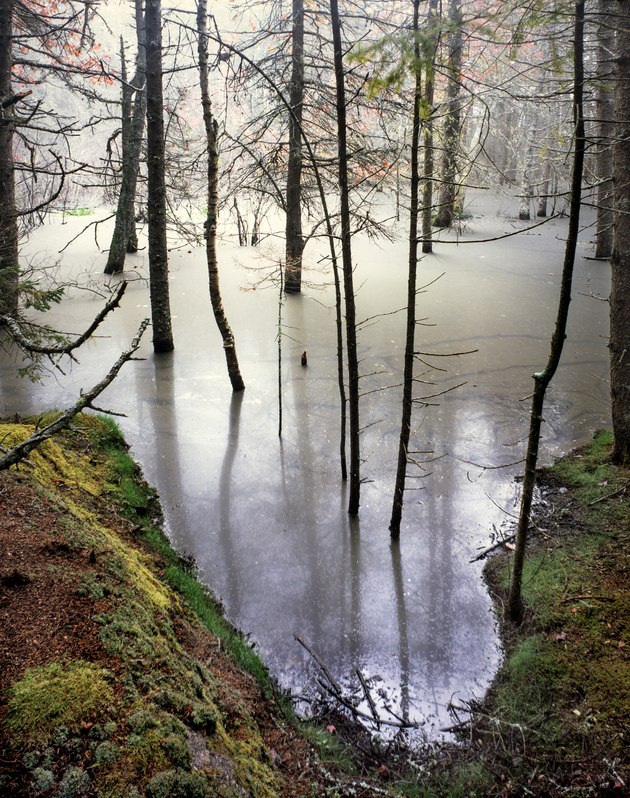On this autumn day in coastal Maine, streams had diminished in flow, causing a beaver pond to sink. A smoky scrim of dust and organic detritus arose to cover its surface. Bodies of waters like this are commonplace in Maine, where a quarter of its land is comprised of wooded swamps, bogs, marshes, and meadows, several times the amount of wetland in the other five New England states combined.
When I lived in Maine, exploring the backcountry often tested my ability to find dry-footed pathways between bodies of water. In 1912, this problem prompted Leon to invent a rubber-soled, leather-upper boot, which became an indispensable piece of footwear for traversing Maine's stretches of so-called "land."
On this hike, my reward was visiting a primal setting of moss and grass-covered woodlands crossed by a winding stream. Situated near the source of the quarter-mile-long Ames Creek, beaver, stimulated by the feeling and sound of flowing water, constructed a dam of wood, stones, and mud to flood a previously dry field. The pond ended the growth of a young stand of white pine and oak (its leaves turning russet red in their last season).
This pond provided a habitat for beavers, which, in turn, fostered the growth of aquatic plants for browsing moose and waterfowl. In the fall, when I made this photograph, all members of a beaver family were hard at work reinforcing the dam and fully repairing their winter lodge.
Location research and commentary by James Baker.

